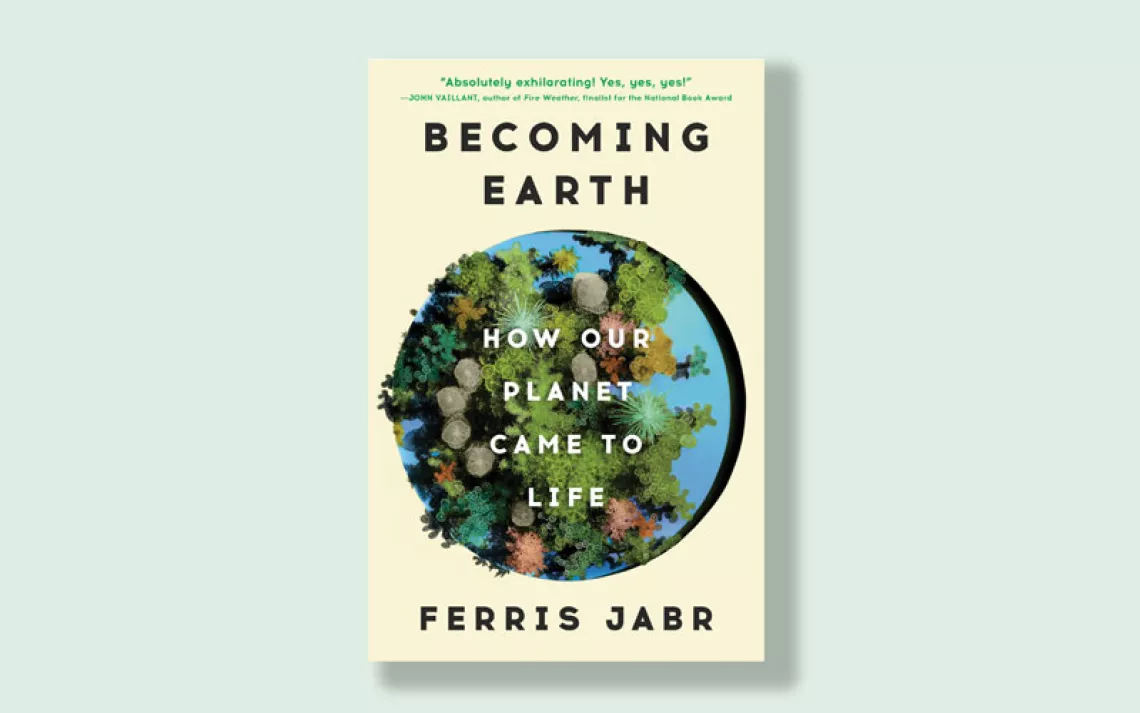7 Books About Trees to Help You Celebrate Arbor Day
Sierra staff branches out with tree-themed recommendations

Photo by graphixchon/istock
When the first Arbor Day was held in 1872, participants reportedly planted more than a million trees. Today, nearly 150 years later, we should be planting trees with the same urgency. According to the United Nation’s Food and Agriculture Organization, trees absorb about 2 billion tons of carbon dioxide a year. In other words, trees are carbon-storing superheroes that could help mitigate the worst impacts of climate change by drawing carbon out of the atmosphere. Arbor Day is as good a time as any to ruminate on the many wonders of trees and renew our appreciation for our leafy friends. Here are seven of our favorite tree-themed books to help you do that.
The Night Life of Trees
Bhajju Shyam, Durga Bai, and Ram Singh Urveti
Tara Books, June 2006
The forest and its panoply of trees are a crucial part of life for the Gond tribe in central India. In The Night Life of Trees, three of the most recognized artists of the tradition come together to create spellbinding handmade drawings that explore folktales of the Gond jungle.
In one, a peacock dances while trees change their form to flaming feathers. In another, a squirrel pensively dreams on the branches of a burnt-orange tree about what it would be like to be someone else and decides it is better to remain a squirrel on a tree. Another page depicts two lovers reborn as trees curving toward each other. The respect and devotion the Gond have for their leafed companions is clearly visible, and the sinuous but geometric artwork is luminous. —Mukta Patil
The Signature of All Things
Elizabeth Gilbert
Riverhead Books, June 2014
Alma Whittaker, this novel’s shrewd but lonely protagonist, loves mosses. Alma, whose father deals in exotic plants, grows up longing for companionship but also for knowledge of how the plant world works. Being a scientific-minded woman was hard in 19th-century Philadelphia, even with a vast fortune. In a world run by men, Alma is as fierce as she is tender; her development as a character as she navigates the world—botanical, emotional, and physical—is perhaps Gilbert's best work. As the mosses reveal their world to Alma, she poises on the brink of the greatest discovery of our times. —Mukta Patil
 Photo courtesy of Random House
Photo courtesy of Random House
The Botany of Desire
Michael Pollan
Random House, 2001
While not strictly about trees, Michael Pollan’s Botany of Desire was a pioneering book, inviting readers to imagine the deeply alien perspective of plants. It’s more philosophical than the food-centric works for which Pollan later became known. In it, he follows the trajectories of apples, potatoes, tulips, and marijuana through our shared evolutionary journeys, and in doing so, flips a homocentric agricultural dogma on its head. Botany of Desire calls into question human hubris and our supposedly unbridled mastery of nature, and it begs us to wonder who manipulated whom in the great game of evolution. —Jacob Shea
Parsley
Ludwig Bemelmans
Harper, 1804
This tale of a friendship between a parsley-loving old stag and a burly pine tree never quite manages to stay in print the way that Bemelmans's Madeline books do, possibly because the tree and the stag team up with gristly effectiveness against a hunter who disrupts their arcadian idyll. But Parsley has some of Bemelmans’s most warm and luminous illustrations—if you can snag a copy, it’s well worth the read. —Heather Smith
The Lorax
Dr. Seuss
Random House, August 1971
The Lorax is a classic, both as a work of environmentalist kid lit and as an accurate depiction of how often adults punt fixing the environmental catastrophes that they cause to the next generation. Its continued success is alarming enough that the National Oak Flooring Manufacturers' Association published its own version, The Truax, to provide a more pro-logging perspective. —Heather Smith

Photo courtesy of Random House
Trees: Between Earth and Heaven
Art Wolfe
Earth Aware Editions, November 2018
Art Wolfe’s photographic ode to trees is so spectacular that we couldn’t resist including an excerpt of this previously published Sierra review (check out the slideshow here):
In his new book, photographer Art Wolfe turns his lens to the woody and fibrous, carbon-sequestering perennials that define so many landscapes around the world. The photographs in Trees span six continents and bring the world’s most iconic tree species in vivid focus. “This book is meant to be immersive,” says Wolfe. “It is meant to make you feel like you are standing in a misty autumn forest or watching light dance through the branches of redwoods.”
Wolfe’s work is a stunning collection of color photographs lending credence to that certain sacredness that exists in the forest and nowhere else. “I try to photograph what’s beautiful on the planet, to give people a reason to want to save the environment,” he says. “The wilderness is bigger than us, but we hold its future in our hands.” —Austin Price
The Overstory: A Novel
Richard Powers
W.W. Norton & Company, April 2018
Nobody ever wants to borrow a book from me. That’s because, as a reader, I’m an inveterate scribbler. I plaster the pages with marginalia, and I graffiti the paragraphs with notes and symbols (stars, exclamation points) wherever I come across something that ricochets around my mind—unless, that is, I am reading fiction. Then I’ll put my pen down, because I’m reading for pure pleasure. But when it came to Richard Powers’s Pulitzer Prize–winning novel The Overstory, my pen was as busy as ever as I tried to capture the wealth of wisdom embedded in the story; my copy of the hardback edition is a perfect mess.
The Overstory weaves together the narratives of nine human characters with the epic story (make that stories) of the nonhuman lives we coexist with, yet so often fail to take notice of. The human tales are gripping and dramatic, and environmentalists of a certain age and radical sensibility will be thrilled by Powers's depictions of the 90s-era Timber Wars that took place in the Pacific Northwest and which anchor much of the plot. But the real fable here has nothing to do with people. Powers seamlessly threads together science and philosophy to reveal how much more we humans could understand about life on Earth—and about our place on this planet—if only we could begin to see the world from a tree’s point of view.
The insights come as heavy as acorn mast in a bountiful year. From a tree’s perspective, “the ways you imagine us are always amputations” and “what you make from a tree should at least be as miraculous as what you cut down.” For trees, time moves differently—“not a line . . . a column of concentric circles.” Human megacities notwithstanding, “nothing is less isolated or more social than a tree.” An industrial clearcut is the equivalent of “burning down the art museum, library, and pharmacy all at once.”
At one point, a human character reflects that “to be human is to confuse a satisfying story for a meaningful one.” With The Overstory, Powers manages to deliver both. —Jason Mark
And finally, one book un-recommendation:
The Giving Tree
Shel Silverstein
Harper & Row, 1964
When I was a kid, someone gave me a copy of The Giving Tree by Shel Silverstein, which (spoiler alert!) is about a little boy and a friendly tree that offers him more and more of its limbs and trunk for various things the boy needs as he grows into adulthood. Eventually, the tree is just a stump, which the boy—now an old man—sits on.
Shel Silverstein clearly thought this was a beautiful story, and, as a solipsistic kid, I have to say that endlessly getting things without having to give anything in return seemed like a pretty sweet deal. But my mom was horrified, said that was no way to treat anyone, tree or not, and refused to read it out loud without lavish editorializing. Age and wisdom have put me on the same page. If you love Shel Silverstein, just give the kids Where the Sidewalk Ends. —Heather Smith
 The Magazine of The Sierra Club
The Magazine of The Sierra Club



